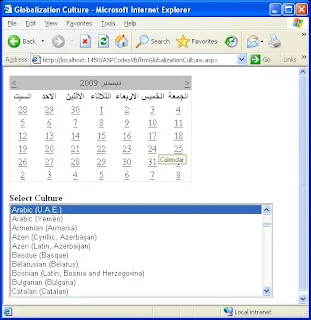Export Data From Excel File in ASP.Net
The following function takes the following parameter :
"excelFileName" : Its specify the Path with File Name .i.e: "D:\MyExcel.xls"
Use the following NameSpace :
Get Active Sheet Name :
The following function takes the following parameter :
"strFileName" : Its specify the Path with File Name .i.e: "D:\MyExcel.xls"
Use the following NameSpace :
Code :
The following function takes the following parameter :
"excelFileName" : Its specify the Path with File Name .i.e: "D:\MyExcel.xls"
Use the following NameSpace :
using System.IO; using System.Reflection; using Microsoft.Office.Interop.Excel;Code :
/// <summary>
/// This function convert uploaded Ecxcel sheet into DataTable and then returns
/// </summary>
/// <param name="fileToConvert"></param>
/// <param name="fileForDs"></param>
/// <param name="uniqueFileName"></param>
/// <returns></returns>
public System.Data.DataTable ReadFromExcelFile(string excelFileName)
{
OleDbConnection connection = null;
//this datatable contains Active Sheet records
System.Data.DataTable dtImprtExcel = new System.Data.DataTable();
try
{
// Get Active Sheet Name
string activeSheetName = getActiveSheetName(excelFileName);
//If Active Sheet Name is not Null or Blank
if (!string.IsNullOrEmpty(activeSheetName))
{
// <add key="ExcelConnectionString" value="Provider=Microsoft.Jet.OLEDB.4.0;Data Source=Path;Extended Properties=Excel 8.0;"/>
string connectionString = ConfigurationManager.AppSettings.Get("ExcelConnectionString").Replace("Path", excelFileName);
OleDbConnection excelCon = new OleDbConnection(connectionString);
excelCon.Open();
OleDbDataAdapter adapter = new OleDbDataAdapter("SELECT * FROM [" + activeSheetName + "$]", excelCon);
adapter.Fill(dtImprtExcel);
excelCon.Close();
//cleans up the temporary file that was stored
File.Delete(excelFileName);
}
}
catch (Exception ex)
{
throw ex;
}
finally
{
if (connection != null)
{
if (connection.State == ConnectionState.Open)
{
//close a open connection
connection.Close();
}
}
}
return dtImprtExcel;
}
Get Active Sheet Name :
The following function takes the following parameter :
"strFileName" : Its specify the Path with File Name .i.e: "D:\MyExcel.xls"
Use the following NameSpace :
using System.IO;
using System.Reflection;
using Microsoft.Office.Interop.Excel;
Code :
/// <summary>
/// Get Excel Sheet Name
/// </summary>
/// <param name="path"></param>
/// <returns></returns>
private string getActiveSheetName(string strFileName)
{
string activeSheetName = string.Empty;
try
{
Application oXL;
Workbook oWB;
Worksheet oSheet;
// Start Excel and get Application object.
oXL = new Application();
// Set some properties
oXL.Visible = false;
oXL.DisplayAlerts = false;
// Open the workbook.
oWB = oXL.Workbooks.Open(strFileName);
// Get the active sheet
oSheet = (Worksheet)oWB.ActiveSheet;
activeSheetName = oSheet.Name;
// Save the sheet and close
oSheet = null;
oWB.SaveAs(strFileName, Excel.XlFileFormat.xlWorkbookNormal,
Missing.Value, Missing.Value, Missing.Value, Missing.Value,
XlSaveAsAccessMode.xlExclusive,
Missing.Value, Missing.Value, Missing.Value,
Missing.Value, Missing.Value);
oWB.Close(Missing.Value, Missing.Value, Missing.Value);
oWB = null;
oXL.Quit();
// Clean up
// NOTE: When in release mode, this does the trick
GC.WaitForPendingFinalizers();
GC.Collect();
GC.WaitForPendingFinalizers();
GC.Collect();
}
catch (Exception ex)
{
throw ex;
}
return activeSheetName;
}












